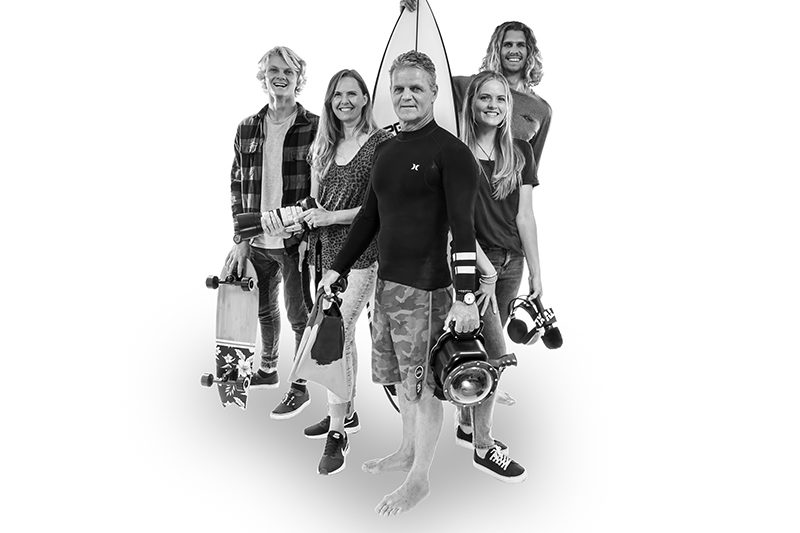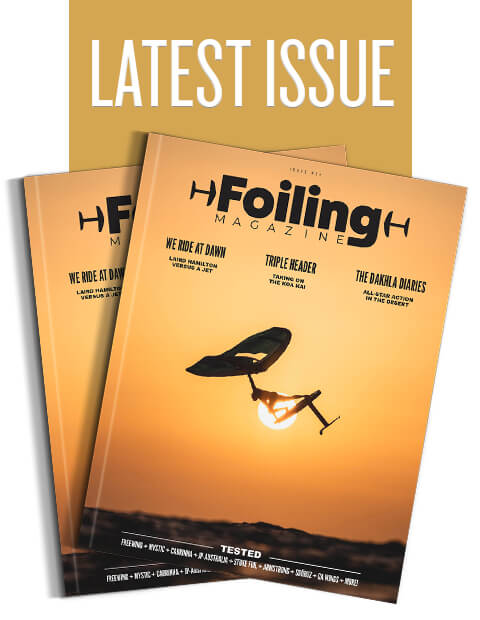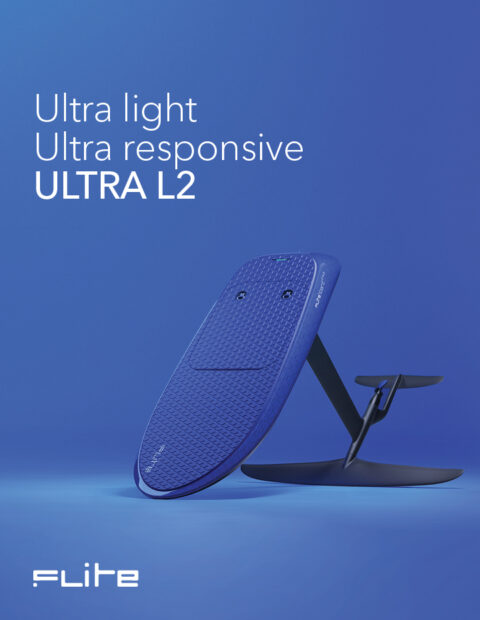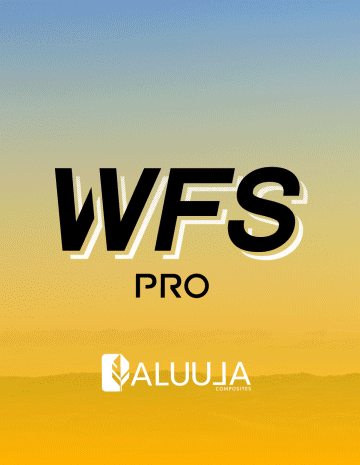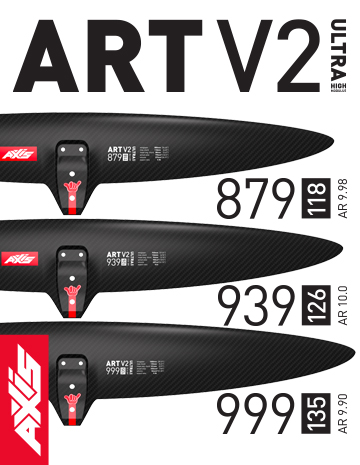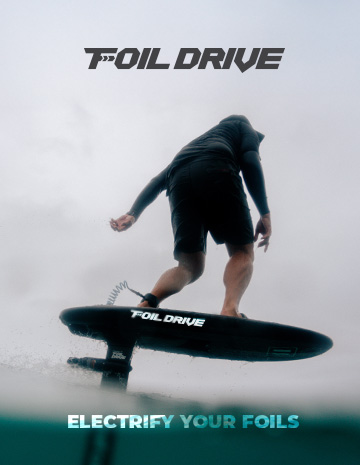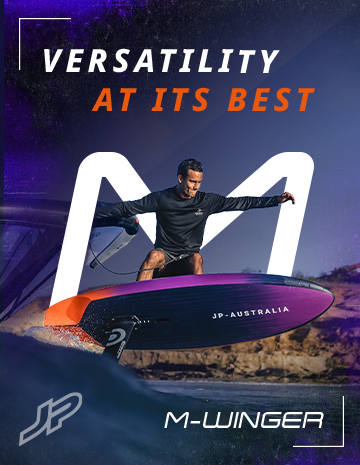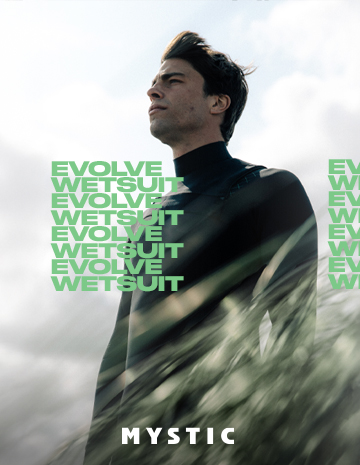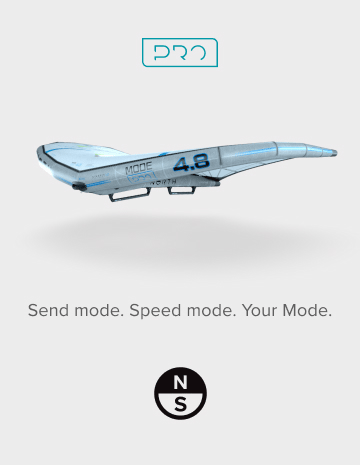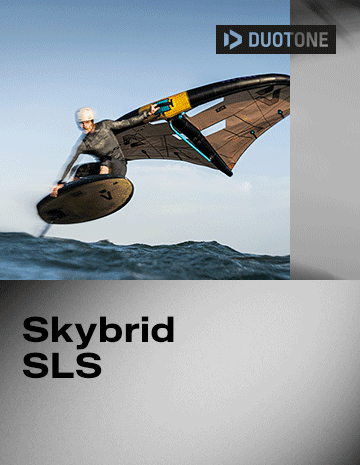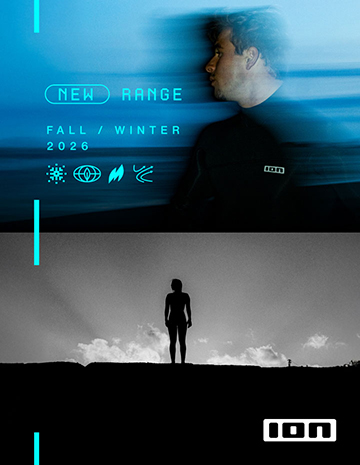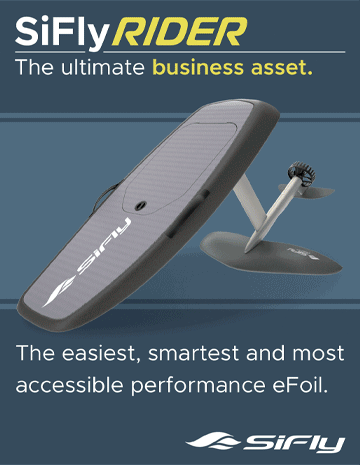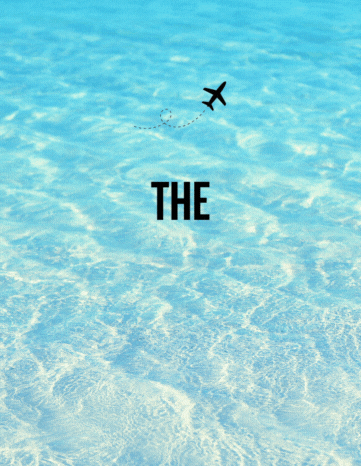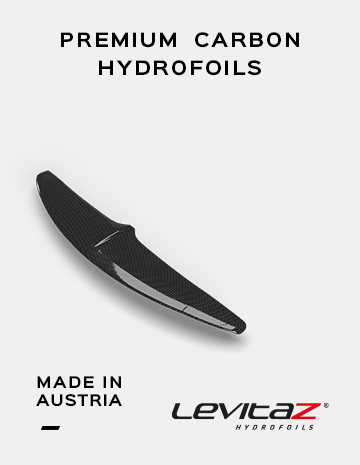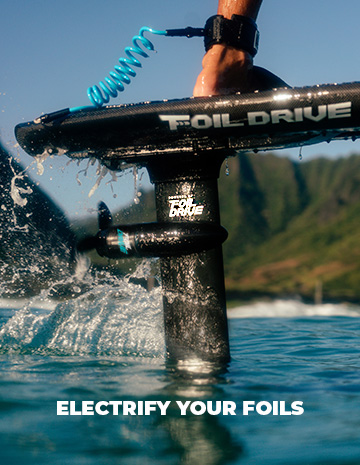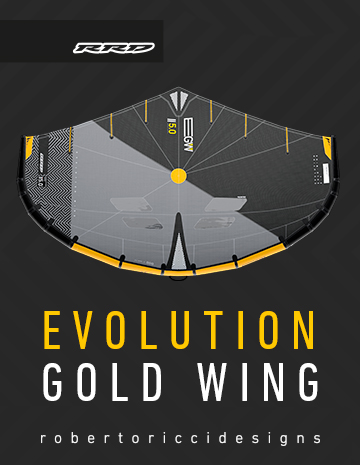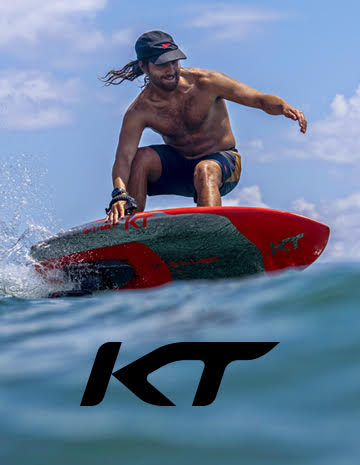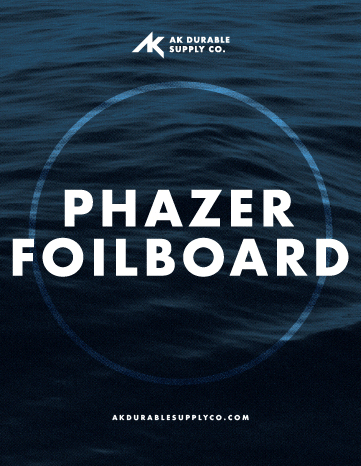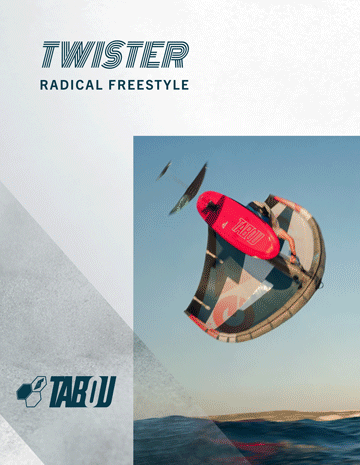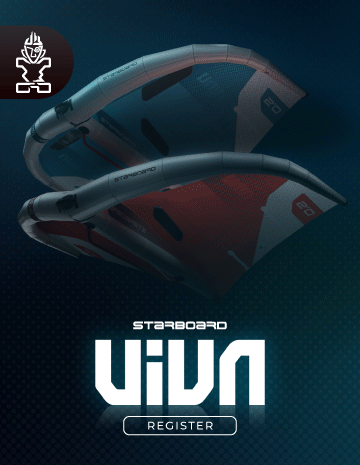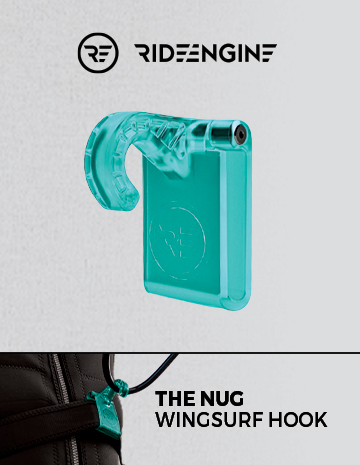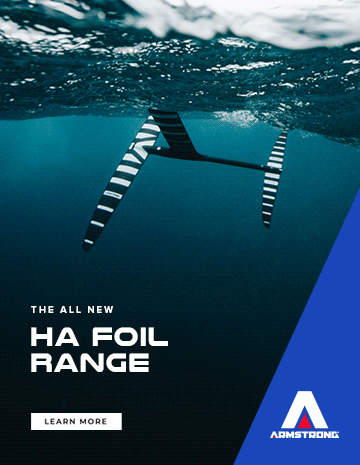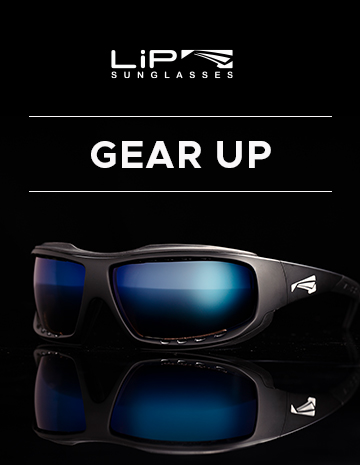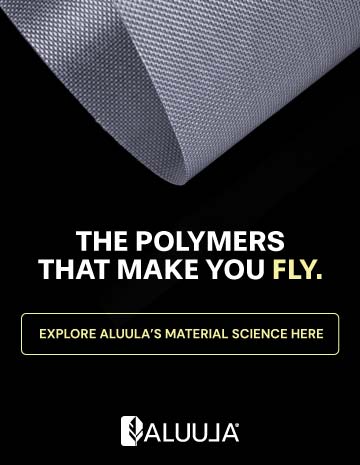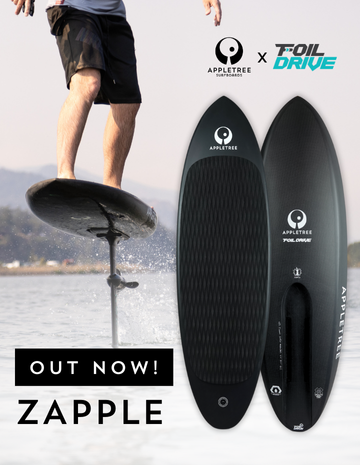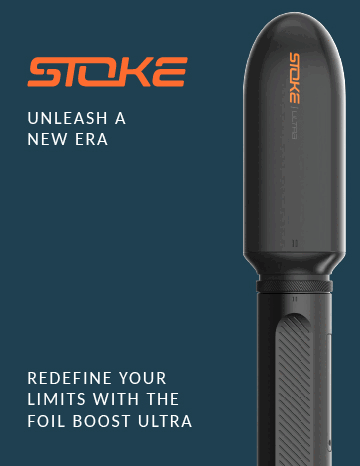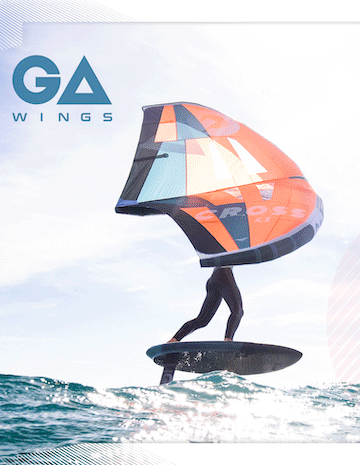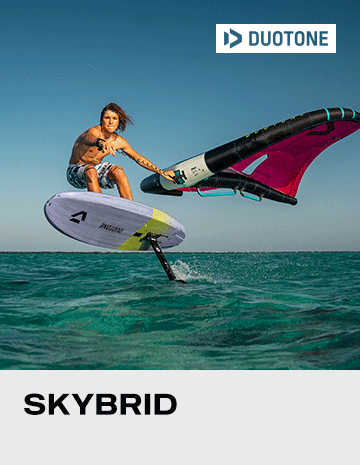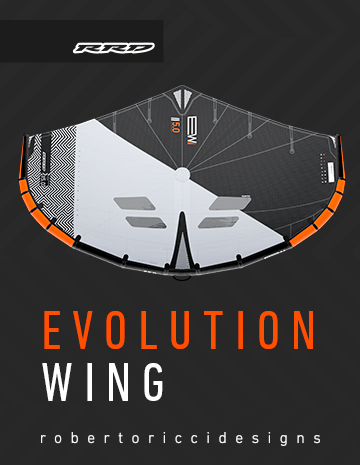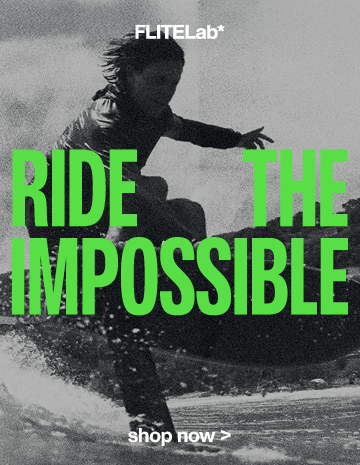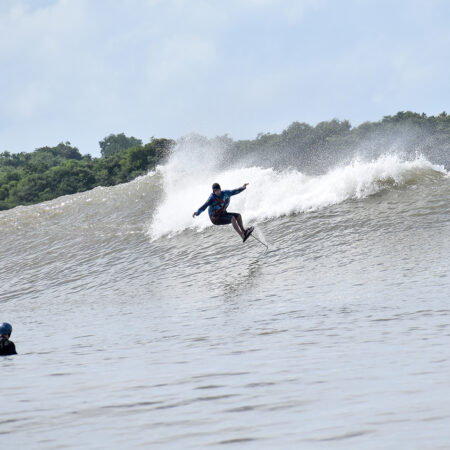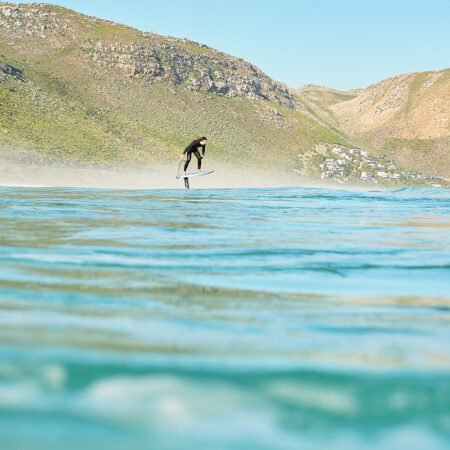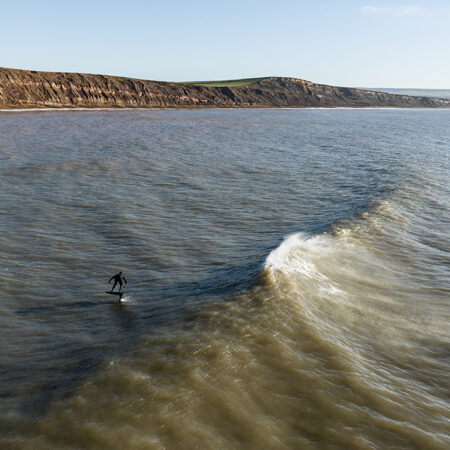Brand Backstory: SPG
Signature Performance Gear (AKA SPG) has a long and robust lineage in the water sport industry, and deftly moved into the world of foils with distinction several years ago. They’re a meticulous and friendly bunch, and a family affair in the truest sense. We briefly covered the dynamic between founder Ivan van Vuuren and his son Nathan several issues ago. But the company itself has a bigger story to tell…
Firstly Ivan, give us an overview of SPG. How did it all begin, and who started it all…
SPG was born in 2013 by a group of riders, designers and shapers that were passionate to create a performance brand that had an authentic family ethos and would also become a global platform for other shapers, athletes and designers to expose their hidden art to the sports world.
At the helm was myself and family, who, apart from designing boards for over 40 years, personally also came from a professional sports and media production background, with roots in both South Africa and Hawaii, two perfect destinations for innovating new gear and operating logistics on a global scale. Nicki Carstens, former world champion athlete headed up board design, while Michael Oxley and James Leigh, both avid watermen, spearheaded the production. The original “Signature” concept was to create surf and skate products while also marketing the athletes and designers with their own specific Signature product. Today, much of this still runs in the veins of the business but has also grown on a much wider scale, especially in the foil division.
We know you now have several wings (forgive the pun) to the business, right?
Yup, surf and skate were initially the larger starting points with products that we were most familiar with due to earlier brands we had started back in the early 80’s. In 2014 (after I was released from our previous SUP brand called Coreban that we started in 2005) we added SUP to the Signature line up. Then in 2016 it all went crazy when we got totally addicted to flying on water – foiling quickly consumed our every thought and the rest is history. Along with these divisions, we were also fortunate to be one of the earlier pioneers in wing surfing when in 2018 we were one of the first brands into market with the inflatable AIR wing.
As exciting as it has been to see the growth and be a part of this sport, we soon realized with the increase in global demand on all fronts that we were spreading ourselves too thin and to rather focus on what we specialize in, specifically foils and boards, and to leave the inflatable wings to competent kite companies that were well established in the market. For us it was about producing higher end performance gear for a boutique market requiring that extra edge and focused time.
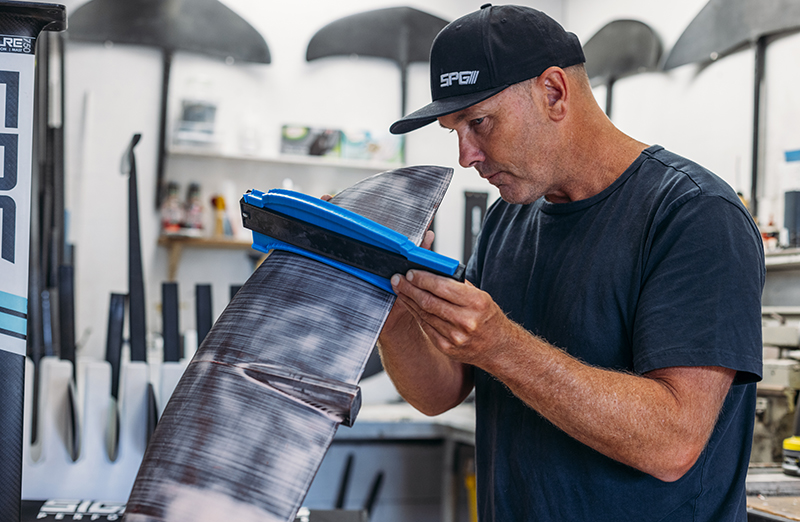
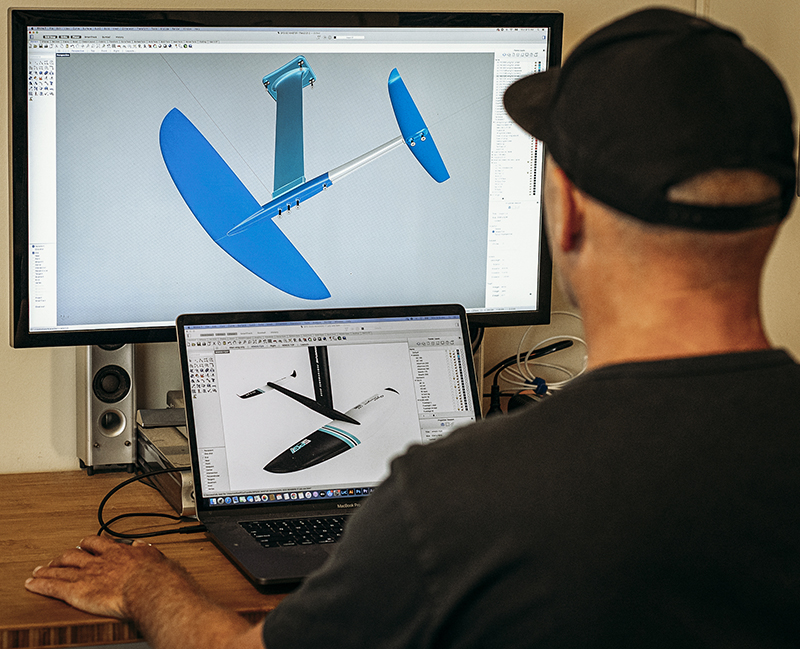
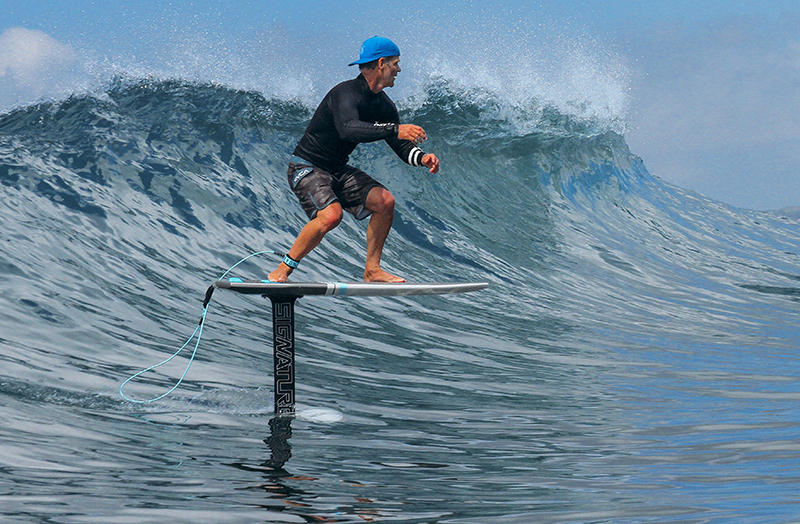
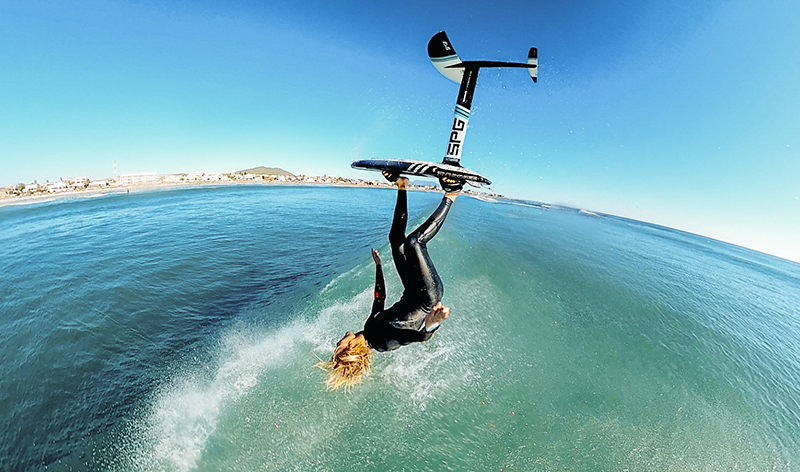
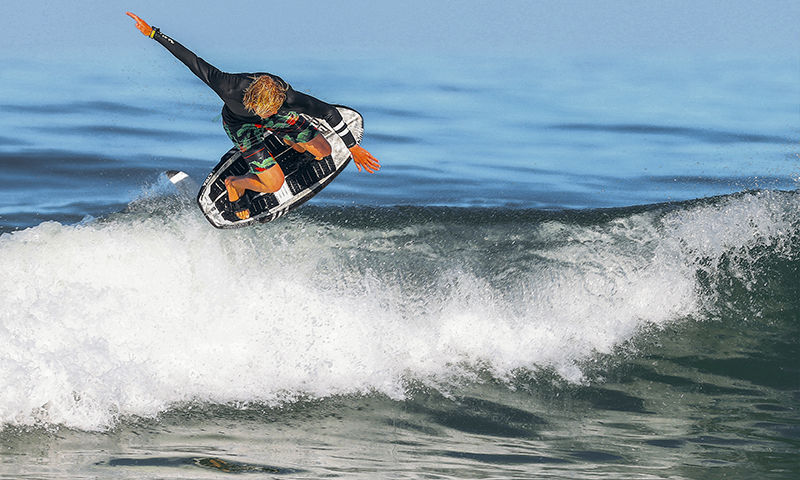
Who are the main players at SPG today? Tell us about their roles…
The brand has gone through a few exciting changes over the years with many key players – probably too many names to mention in one paragraph – who have added value to the success of where we find ourselves today. From marketing gurus to production technicians and influential distributors in different countries, we have been blessed to have talented riders that dedicated part of their lives to seeing the brand rapidly establish itself in a pretty competitive sports market.
As time has gone by, the structure has somewhat changed where the internal players are now mostly family with a few key external “Signature family” members who are also part of this amazing journey. Guys like Geoff Cox in NZ designing foils, Malte Simmer and Robbie Griffiths testing with their crews in Hawaii and Australia. Internally it’s quite an interesting dynamic with my son Nathan overseeing design, my daughter Genevieve heading up the media, her husband James overseeing global production, while my wife Karin heads up admin and cameras, and then myself still in the pilot’s seat filming and testing gear. We are in it together, living life as a sports family: traveling, designing and building friendships around the world together. It’s probably quite unique and really amazing to see the pieces all fit together.
So it really is a true family affair, and Nathan seems to be playing an increasingly higher profile role in the business. How has it been to see him develop his waterman career and to now be a key member of the SPG team?
“Family affair”, yup that sure is a good way to put it and to be honest, watching Nathan develop into a businessman and somewhat driving the SPG movement forward while still being dedicated to the sports he so loves sure has been wild and interesting to watch. He’s still a surf-rat at heart, but modestly speaking, many would say he is gifted beyond his years in both wisdom and design; having spent more time in shaping bays and designer offices since he was two years’ old than most people will spend in a lifetime. It feels like roles have somewhat changed where he is now spearheading the business and we are trying to keep up, but that’s the way it should be with young and passionate blood, taking our sports and gear to the next level.
So you touched on it earlier but how did you first come to discover foiling, and was it a lightbulb moment for the business from that point?
Actually it’s been quite a journey from the early days of documenting the first foil surfers on Maui around 2005, where we were also given our first aluminum foil that was heavy, sharp, and scary, so after trying a few times we lay it down to rest. In between we started dabbling with a few kite foil conversions that almost worked…
Fast forward 10 years to the Kai Lenny foil resurgence in 2016, when a friend of ours, Captain Wes Bartho, returned to SA with a foil setup, having been with Dave Kalama and the GoFoil crew on Maui. This thing was revolutionary. We could actually fly and stay up without having to wear snowboard boots or the fear of decapitating ourselves as with some earlier models.
Were there any particular challenges you faced as you moved into the foiling side of the business?
We immediately fell in love with the new lightweight carbon composite foils offered compared to the earlier aluminum structures we had tried. Being based in South Africa at the time, our initial challenge was finding readily available gear. Rather than trying to re-invent the wheel, we contacted Alex Aguera (GoFoil) whom we had a long-time friendship with, to check on the options of importing GoFoil products to Africa. After evaluating the deeper business structure with exuberant exchange rates, transport fees and import taxes we were unfortunately back to square one with unbalanced local prices not making it feasible to feed the addiction. Next was to see what could be created locally, if only just for a few of us to feel that flying feeling again. We reached out to a few local guys that were dabbling in carbon production, when someone suggested we get hold of Clifford Coetzee, a designer who was making a few wings for his friends in Jeffery’s Bay. A few good chats later, and before we knew it Clifford was on board designing and producing carbon foils for Signature from his workshop in J-Bay. Clifford would produce them, we would decal and finish them, and off they would go to frothing foilers across the country. This was all fun and games with only a few random sales… until Nathan started breaking some local downwind race records and receiving an invite to compete in Hawaii at the first Molokai2Oahu World Paddle Championships, incorporating an elite invitational foil division. Arriving on Maui at 16 years of age, documenting over x50 waves being caught in a row and then finishing up second behind Kai Lenny at the M20, word got out that these South African wings were next level. Soon after, orders were streaming in from around the world. With this added exposure, Clifford’s brand Unifoil also started gaining more traction and production was in full swing with global demand on both our brands forcing Signature to move production to Asia.
As with any growth, there also comes teething challenges. Keeping up was a nightmare, but deep inside our passion to see riders around the world enjoying the freedom and experience of what we felt on these performance foils and boards kept the drive alive. Modifications to meet the ever-changing foil sports that were growing, new stronger layups, redesigned modular set ups, all while still staying innovative and creative seemed to be a part of the early challenges. Fortunately, what doesn’t kill you makes you stronger, and we sure have learnt a heck of a lot and can now look back with some wild and crazy stories of “remember when”.
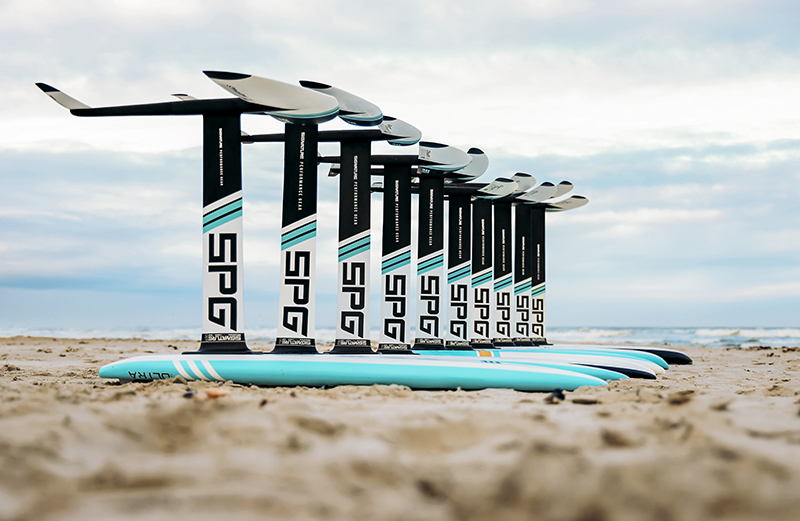
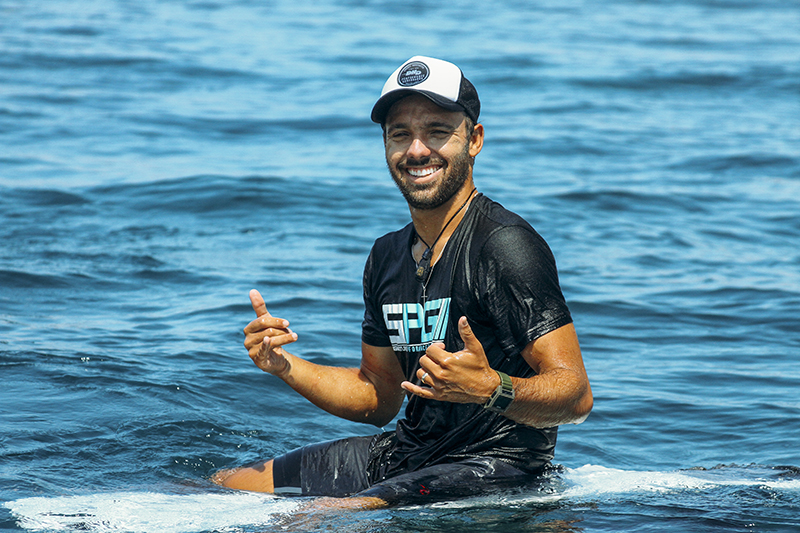
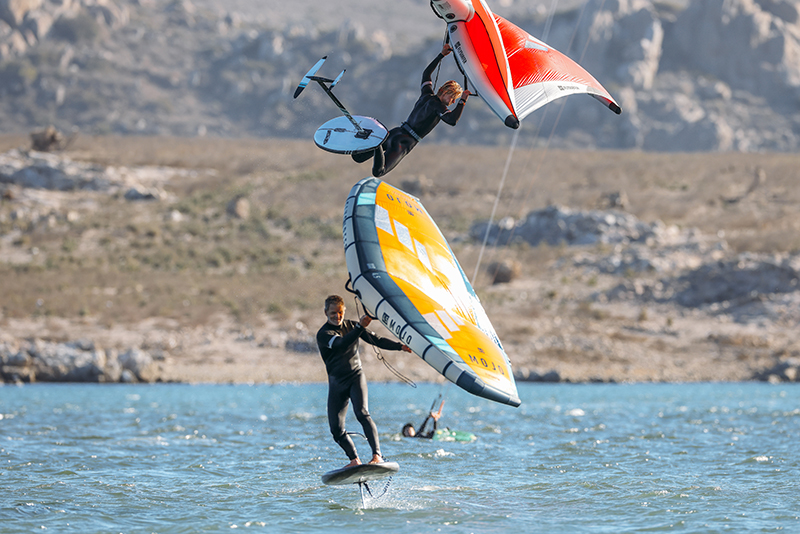
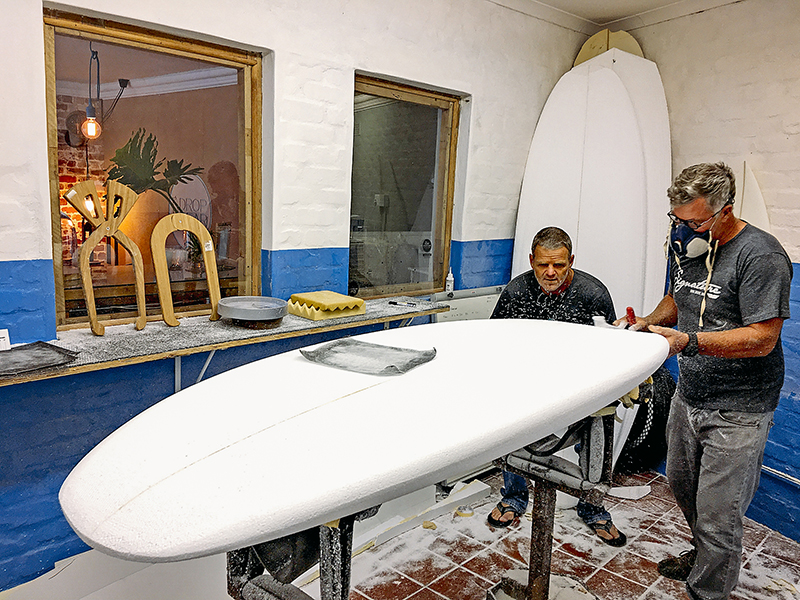
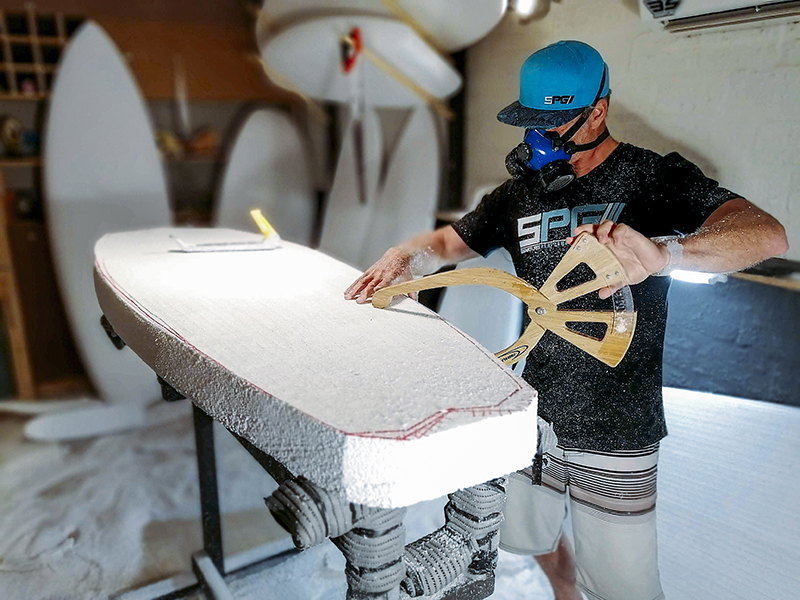
You guys seem to span the global watersports meccas comprehensively for both your team and product development. How did you go about establishing this network?
Timing is everything. Little did we know that our main media production company called PREMIER HAWAII would over the past 30 years be a key ingredient and allow us the opportunity to be in the right place, crossing paths with the right people at the right time. From surf, windsurf, kite, to SUP and foil markets, we were fortunate to be part of documenting the early pioneering stages of these sports while connecting with influential riders, many that have become a part of this ever-growing Signature family.
You’ve now released three foil product lines. Talk us through how each one evolved and their intended market?
We currently have three ranges with two more exciting new innovative ranges that will be released this year. The STEALTH is where it all started and to this day is still the progressive, advanced rail-to-rail performance foil range used for surf, wake and kiting.
The ALBATROSS range is the original “high aspect design” that has recently been redesigned from the early J-Bay days into a radical V2 modular edition created specifically for downwind/pumping and rated by top riders around the world as a racing machine.
GC – the Game Changer – is the latest addition to the Signature foil range, designed by SPG foil designer Geoff Cox, and is a medium aspect, a hybrid of the Stealth/Albatross all in one. Great pump and wave riding ability used for surf, wake, SUP, wing and kite.
You offer many different materials for your board construction. How have you accumulated the knowledge to decide on the material application, and have you experimented with anything new and exciting recently?
We have had the privilege of owning multiple brands and creating boards since the 80’s – from surf, to SUP, kite, windsurf, foil and wing surfing, each requiring specific material layups that will best suit the rider, conditions, product and price range. The combination and years of trial and error, together with R&D testing in a wide variety of conditions, temperatures and continuously refining composite materials that will best suit the current market plus maintain a longer lifespan is a key to being on the forefront of not only board construction but also board design. There are a few different composites that we enjoy experimenting with but as much as we like to be innovative and forerunners trying new materials (there’s quite a few new releases these last two years), we prefer to use materials that have been tried and tested, and then once we are convinced it’s the next best thing, we may transition and release into market.
Finally, where do you see your product development leading you in the next five years?
These are still early foil days. The next five years is going to be wilder than ever. As much as we continue to create and think about what needs to function well for riders today, we do feel much of our foil market as we know it is still very two dimensional, meaning there is a whole new level of design that is and needs to take place to catch up with global market trends of foil and flight. As a team we are already progressively dreaming and designing gear that seems somewhat futuristic, but the good news is that before we know it we will be flying in a whole new exciting three dimensional world using foils, boards and wings that will blow our minds, so stay ready, it’s going be super exciting.































